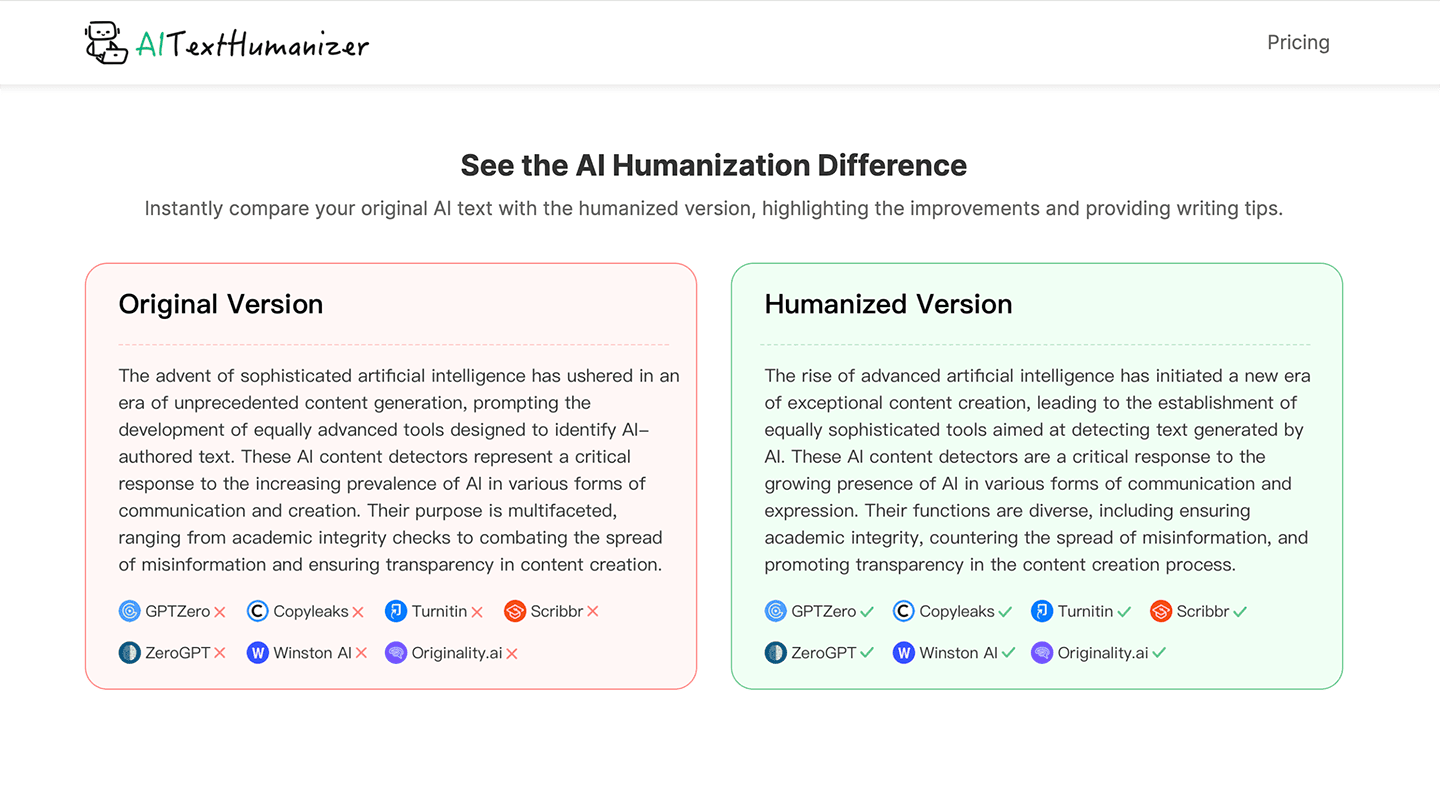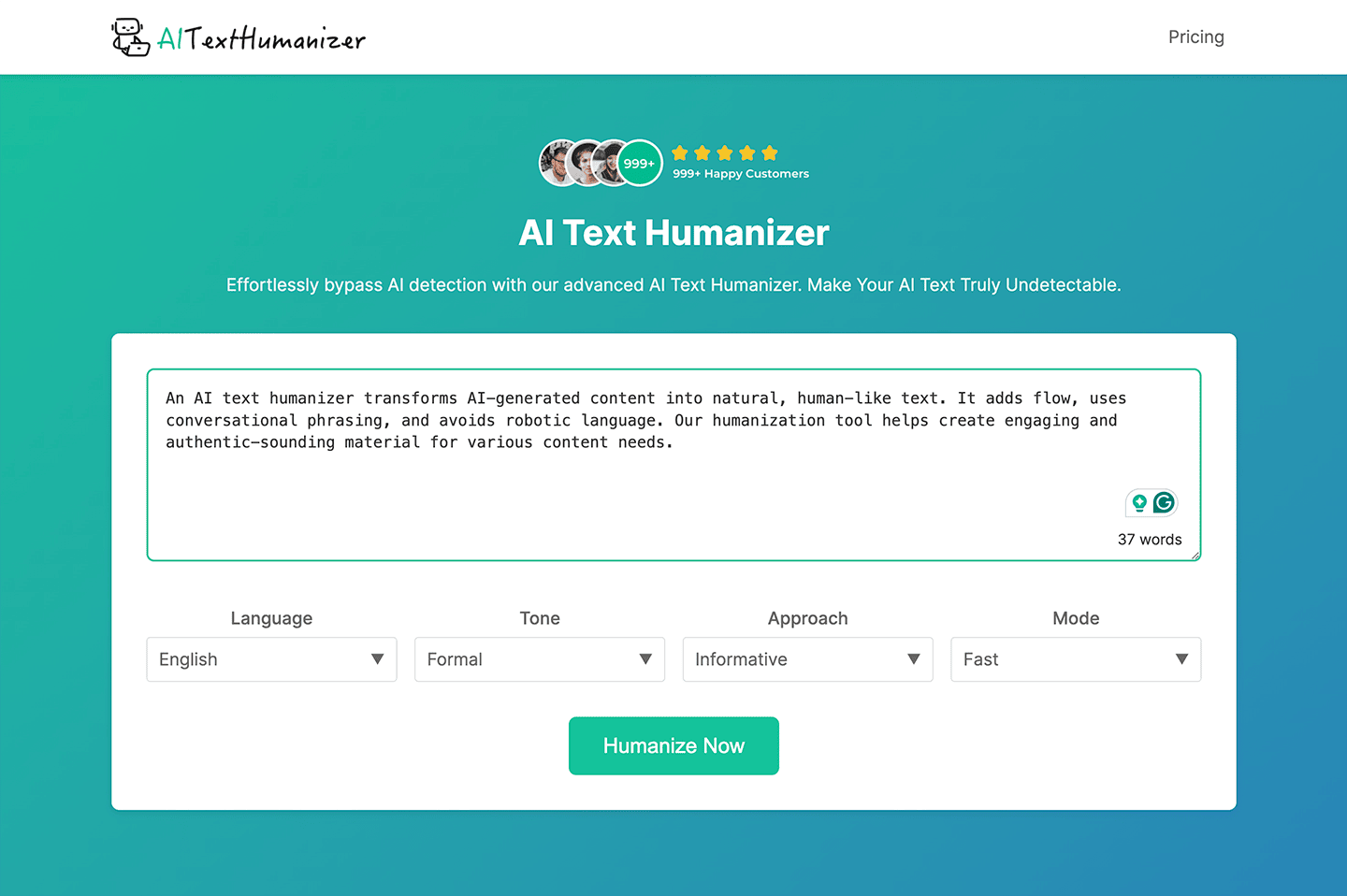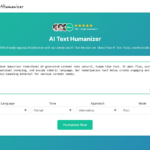The digital content landscape has seen a seismic shift with the rise of AI writing assistants. While these tools offer incredible efficiency and help overcome writer’s block, they often produce text that sounds stilted, formulaic, or just plain robotic. This is where humanizer tools for ChatGPT come into the picture – they’re designed to transform AI-generated content into writing that feels authentically human.
For anyone publishing content online, using an AI Text Checker can be invaluable, as it helps identify whether your content still bears the telltale signs of machine-generated text. Tools like AI Text Humanizer can analyze your content before publication, giving you peace of mind that your writing appears natural and engaging to both readers and search algorithms.
But what exactly makes text sound “human,” and how can you use humanizer chatgpt tools to achieve this quality? Let’s dive in and explore this fascinating intersection of artificial intelligence and natural human expression.
Contents
What Makes Text Sound “Human” vs. “AI-Generated”?
Before we explore the tools, it’s essential to understand the key differences between human and AI writing:
Human Writing Characteristics:
- Inconsistency: Humans don’t write with perfect consistency. We make small errors, shift tone slightly, and don’t follow exact patterns.
- Personal voice: Human writing carries unique expressions, word choices, and sentence structures.
- Emotional nuance: We naturally include subtle emotional signals that AI often misses.
- Cultural references: Human writers naturally incorporate culturally relevant examples.
- Imperfection: Real writing isn’t always perfectly structured or contains occasional redundancies.
AI Writing Characteristics:
- Overuse of transitions: AI loves phrases like “moreover,” “furthermore,” and “in addition.”
- Predictable structure: AI often follows formulaic patterns in paragraph and sentence structure.
- Repetitive phrasing: Without careful prompting, AI tends to repeat certain phrases or sentence structures.
- Generalized examples: AI examples often lack the specificity that comes from personal experience.
- Unnatural perfection: Sometimes AI text is too clean, too structured, and too consistent.

How Detectable is AI-Generated Content?
The question of how easily detectable AI content is concerns many content creators. The truth is that standard AI output has recognizable patterns that make it detectable by both specialized tools and attentive human readers. These detectable patterns include:
- Predictable sentence structures
- Overly formal tone even in casual topics
- Perfect paragraph balance
- Lack of personal insights or unique perspectives
- Absence of colloquialisms or regional expressions
Using proper humanizer chat gpt techniques significantly reduces these detectable patterns, making your content appear more naturally human-created.
Top Humanizer Tools for ChatGPT Content
The growing demand for natural-sounding AI content has led to the development of several humanizer chat gpt tools. Here are the most effective ones:
1. Specialized Humanizer Prompts
One of the simplest ways to make ChatGPT sound more human is through specialized prompting. Try these approaches:
- Character-based prompting: Ask ChatGPT to write as if it’s a specific person with a defined background and personality.
- Example-based prompting: Provide examples of the writing style you want to mimic.
- Emotional prompting: Specify the emotional tone you want the content to convey.
Sam, a content marketer, shares: “I used to struggle with AI content sounding too formal. Now, I prompt ChatGPT with something like ‘Write this as if you’re a friendly 35-year-old teacher explaining to a friend over coffee.’ The difference is amazing – it immediately sounds more conversational and warm.”
2. Dedicated Humanizer Software
Several specialized tools have emerged to transform AI text:
- AI Text Checker: This comprehensive tool not only detects AI-written content but also provides suggestions to make it less detectable and more human-sounding.
- ZeroGPT Plus: Specifically designed to modify AI text to pass AI detection tools and add human-like variation to the writing.
- AI TextHumanizer: Uses semantic analysis to rewrite content in a more human-sounding way, reducing detectable AI patterns.
3. Manual Editing Techniques
Sometimes, the best approach combines AI efficiency with human editing:
- Sentence variation: Deliberately vary sentence length and structure.
- Personal anecdotes: Insert your own examples and experiences.
- Imperfection insertion: Strategically add natural language patterns like contractions, sentence fragments, or rhetorical questions.
Step-by-Step Guide to Humanizing ChatGPT Content
Let’s walk through a practical process to make your AI-generated content sound more natural:
Step 1: Generate Your Base Content
Start by creating your initial content with ChatGPT. At this stage, focus on getting the information and structure right without worrying too much about how “human” it sounds.
Step 2: Check for AI Patterns
Run your content through an AI detection tool like AI Text Humanizer to identify sections that most clearly signal AI authorship. This will show you exactly which parts are most detectable as AI-generated.
Step 3: Apply Humanizing Techniques
Focus on:
- Breaking up perfect paragraph structures: Make some shorter, some longer.
- Varying sentence openings: Avoid starting consecutive sentences with the same structure.
- Adding personal touches: Include opinions, experiences, or questions.
- Using contractions: Change “it is” to “it’s” and “do not” to “don’t” where appropriate.
Step 4: Read Aloud Test
This simple technique helps catch unnatural phrasing immediately. If you stumble while reading, that section likely needs more humanizing.
Jenny, a blogger, explains: “Reading my content aloud has been a revelation for me. What looks fine on screen often sounds detectable as AI when spoken. I catch so many awkward phrases this way.”
Common Mistakes When Using Humanizer Chat GPT Tools
Even with the best tools, people often make these mistakes:
1. Overcompensation
Sometimes, to sound human, content becomes unrealistically casual or filled with too many slang terms and idioms. This can be just as detectable as text that’s too formal.
2. Inconsistent Voice
Humanizing only parts of your content creates an uneven reading experience where some sections sound natural while others remain clearly detectable as AI-generated.
3. Ignoring Context
Different types of content require different levels of formality. A humanized academic paper should still sound professional, just not robotic.
4. Neglecting Final Human Review
No humanizer tool is perfect. A final human review is essential for catching subtle AI patterns that tools might miss.
The Future of Humanizer Chat GPT Technology
The field of AI humanization is evolving rapidly. Here are the trends to watch:
1. Personalized Humanizers
Future tools will likely be able to analyze your writing style and humanize content specifically to match your unique voice, making AI content less detectable.
2. Context-Aware Humanization
Emerging tools will better understand the context of content and apply appropriate humanization techniques for specific industries, audiences, or purposes.
3. Emotion-Enhanced Content
Advanced humanizers will better incorporate emotional intelligence to make content not just sound human but convey appropriate emotional tones.


